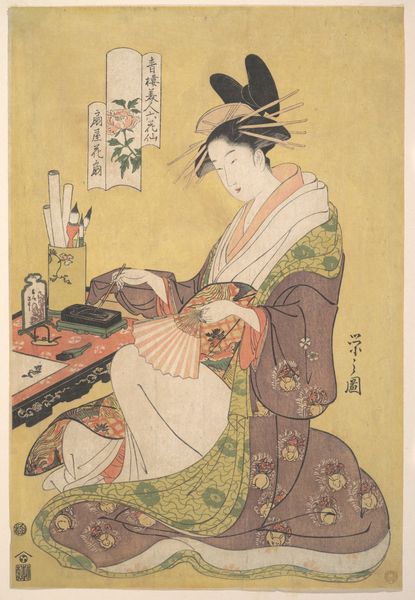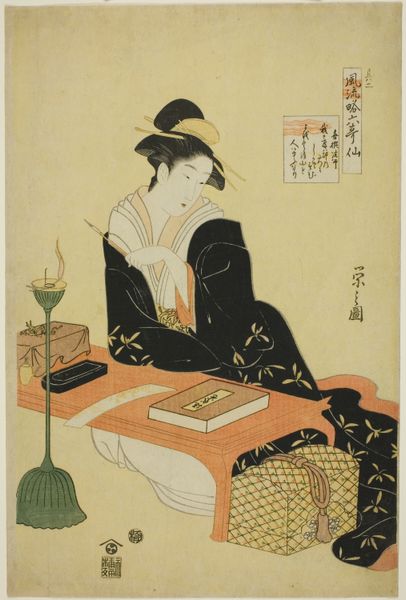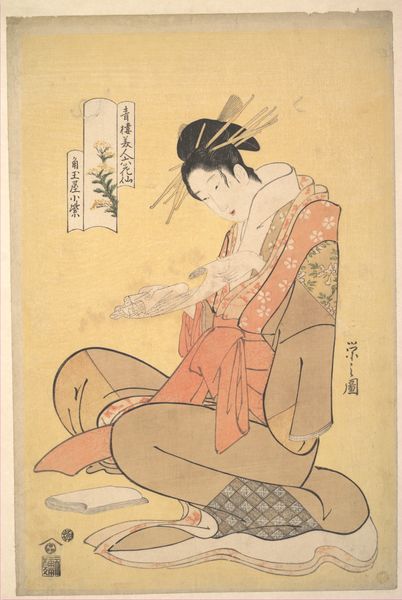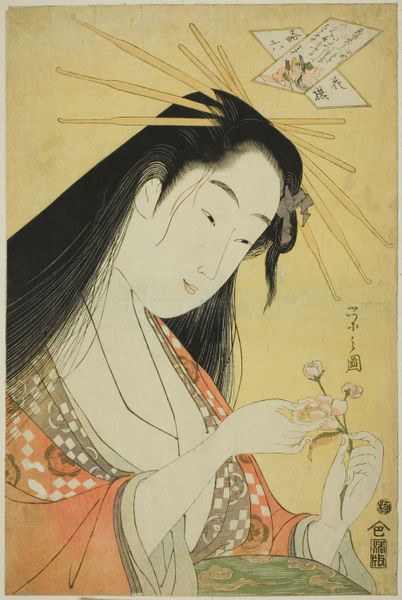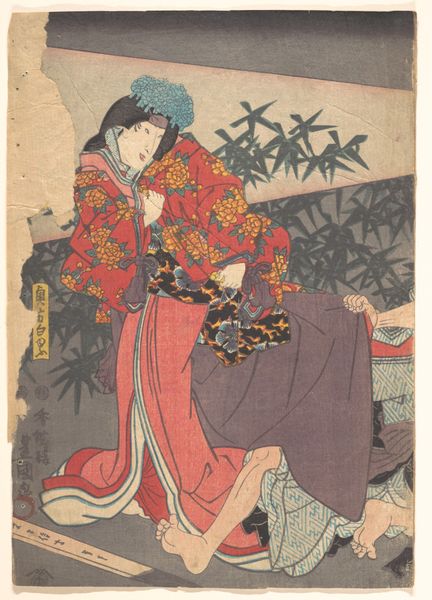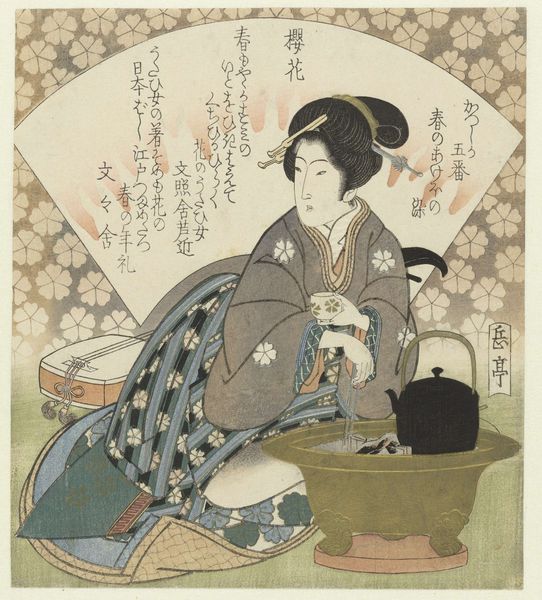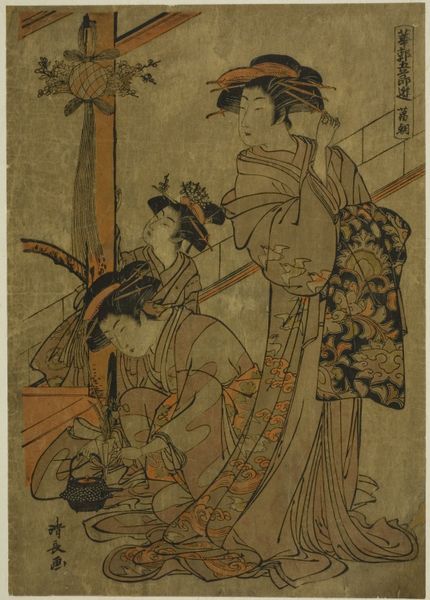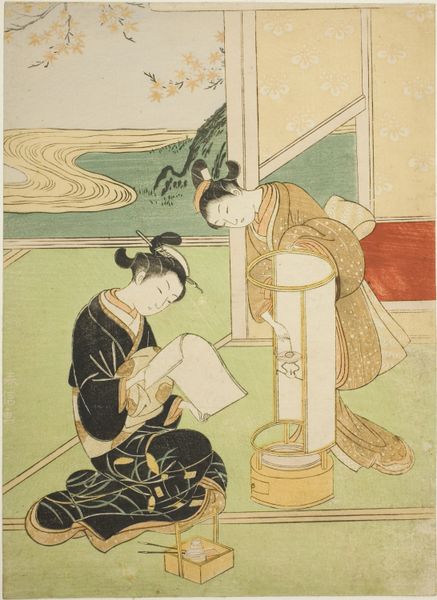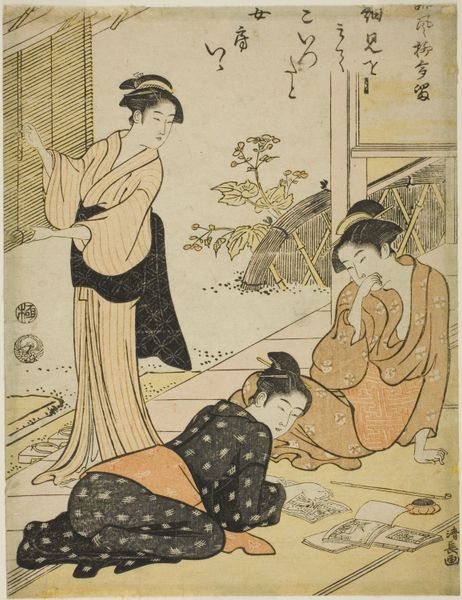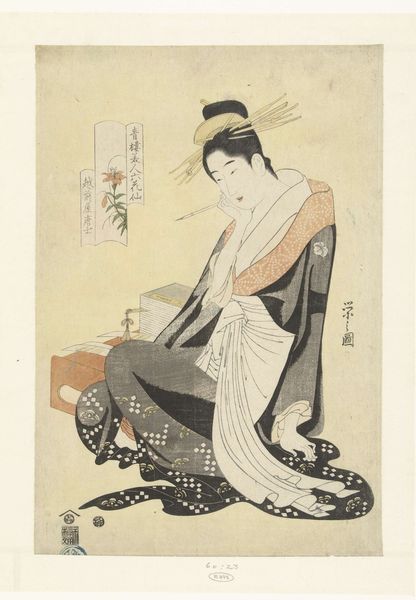
Lady Arranging Binsashi (Support for the Hair over the Temples) to put in Her Hair 1798 - 1818
0:00
0:00
#
portrait
# print
#
asian-art
#
ukiyo-e
#
intimism
Dimensions: 14 15/16 x 9 7/8 in. (37.9 x 25.1cm)
Copyright: Public Domain
Editor: Here we have Torii Kiyomine’s "Lady Arranging Binsashi (Support for the Hair over the Temples) to put in Her Hair," a print from sometime between 1798 and 1818. It feels like a peek into a very private moment. What cultural nuances am I missing? Curator: Well, what stands out to me immediately is how this image engages with the ukiyo-e tradition of depicting beautiful women, but also deviates from it. These prints were widely circulated and consumed, shaping public perceptions of female beauty and domestic life. Notice how the focus is not just on the woman's beauty, but her act of preparing herself. What does that suggest to you about the role of women at that time? Editor: I guess it suggests that even the preparation for beauty was part of the performance of femininity, made available for public viewing, and it feels subtly staged, not quite natural. Curator: Precisely! The commercial nature of ukiyo-e meant these images were essentially products shaping desires and expectations. Consider how the woman's posture, clothing, and surrounding objects – the mirror, the incense burner – all contribute to a constructed ideal of beauty and refinement. How do you think these images influenced the lived realities of women? Editor: It's kind of like Instagram today, setting a standard. Were these prints only for men, or did women consume them too? Curator: Excellent question. Ukiyo-e prints circulated among a wide audience, including women. For women, such prints may have functioned as fashion plates and also social commentaries, shaping understandings of female roles and desires. They are complex cultural artifacts, indeed. Editor: It's amazing how much information is packed into a single image. It certainly gives me a different appreciation for the power of art as a cultural mirror – or perhaps a cultural lens. Curator: I agree, it has widened my view about these images of beauties.
Comments
No comments
Be the first to comment and join the conversation on the ultimate creative platform.

